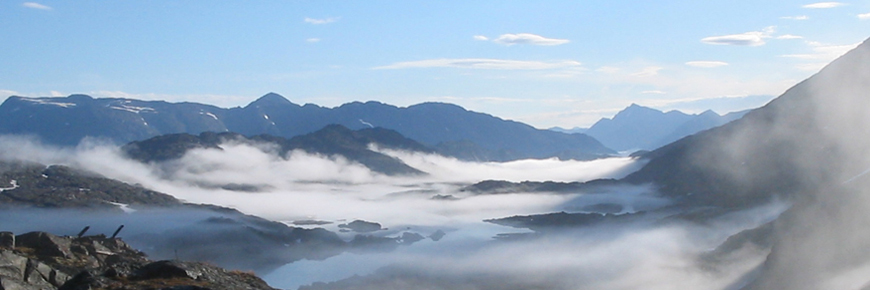
Weather
Chilkoot Trail National Historic Site
Mountain weather is highly unpredictable. It can change quickly and/or vary greatly from one location to another. Most weather systems blow in from the coast. As moist ocean air rises to go over Chilkoot Pass, it cools and loses its ability to hold moisture, producing precipitation.
Hiking season
Hikers can expect wet, cold, windy and/or whiteout conditions; severe rain or snow storms are possible even in the middle of summer. Snowfields between the Scales and Happy Camp persist throughout the summer months and avalanche hazard persists until mid-July.
The U.S. side of the trail tends to be more rainy, overcast. and prone to flooding. The section of the trail between Sheep Camp and Deep Lake is above tree line and frequently experiences severe weather conditions - driving rain, sleet, hail or snow, low temperatures, high winds and fog. Weather in the low lying areas at the north end of the trail tends to be warmer and drier, a pleasant contrast to conditions which prevail on the rest of the trail.
Weather forecasts
There is no Chilkoot Trail specific weather forecast. The following forecasts may give an indication of expected weather conditions along the trail.
Dyea to Sheep Camp
Sheep Camp to Lindeman
South Klondike Highway forecast
Lindeman to Bennett
Fall
Fall weather is especially wet. As a result the U.S. side of the trail is prone to flooding. Daylight hours are short and nights are cold (often below freezing). Fall hikers can expect wet, cold, windy and/or whiteout conditions; severe rain or snow storms are possible.
Winter
Winter weather conditions can be extreme and unpredictable. Conditions above treeline can be especially severe. High winds and driving snow may prevent travel through this open country. Whiteout conditions can prevent detection of hazardous avalanche terrain, open water and overflow, and complicate route finding. Temperatures vary greatly from -46°C/-50°F to near freezing.
Avalanche hazard
It snows up to 508 cm/200 inches per year. Significant avalanche terrain exists in the Chilkoot Trail and White Pass area. All winter backcountry users should know how to recognize and avoid avalanche terrain. Weather can play a major role in the development of avalanche hazard.
- Date modified :